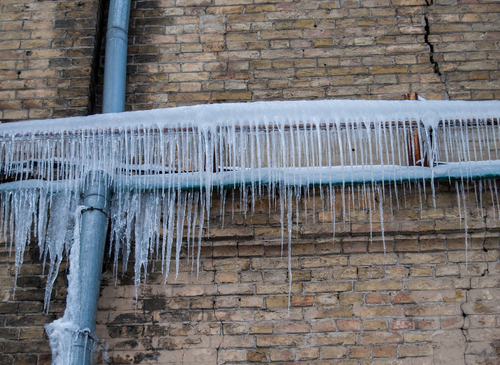Protecting Your Pipes from Cold Weather Damage: Key Approaches
Protecting Your Pipes from Cold Weather Damage: Key Approaches
Blog Article
We have encountered this post involving How to prepare your home plumbing for winter weather listed below on the internet and concluded it made perfect sense to quickly share it with you on this site.

Cold weather can wreak havoc on your pipes, particularly by freezing pipes. Here's exactly how to avoid it from occurring and what to do if it does.
Intro
As temperatures decrease, the danger of frozen pipelines increases, potentially causing pricey repair services and water damage. Comprehending exactly how to stop icy pipelines is critical for property owners in chilly environments.
Prevention Tips
Shielding susceptible pipes
Wrap pipes in insulation sleeves or use warmth tape to protect them from freezing temperatures. Concentrate on pipes in unheated or outside areas of the home.
Home heating methods
Maintain indoor areas appropriately heated up, particularly areas with plumbing. Open up cabinet doors to allow cozy air to circulate around pipelines under sinks.
Just how to identify icy pipes
Look for decreased water circulation from taps, uncommon smells or noises from pipes, and visible frost on subjected pipelines.
Long-Term Solutions
Structural changes
Consider rerouting pipelines away from outside wall surfaces or unheated areas. Include extra insulation to attics, basements, and crawl spaces.
Upgrading insulation
Invest in top notch insulation for pipelines, attics, and walls. Proper insulation assists preserve regular temperature levels and reduces the threat of frozen pipelines.
Shielding Exterior Plumbing
Garden tubes and outdoor taps
Disconnect and drain yard hose pipes before wintertime. Set up frost-proof faucets or cover outdoor faucets with insulated caps.
Recognizing Icy Pipes
What causes pipes to freeze?
Pipes freeze when revealed to temperature levels below 32 ° F (0 ° C) for extended durations. As water inside the pipes ices up, it broadens, taxing the pipe wall surfaces and possibly triggering them to break.
Threats and damages
Frozen pipes can lead to supply of water interruptions, building damage, and expensive repair work. Burst pipes can flood homes and trigger comprehensive architectural damage.
Signs of Frozen Pipeline
Determining icy pipelines early can avoid them from breaking.
What to Do If Your Pipelines Freeze
Immediate activities to take
If you presume frozen pipelines, keep taps available to ease stress as the ice melts. Make use of a hairdryer or towels taken in hot water to thaw pipelines slowly.
Final thought
Protecting against icy pipelines needs aggressive measures and quick responses. By comprehending the causes, indications, and preventive measures, house owners can secure their pipes throughout cold weather.
5 Ways to Prevent Frozen Pipes
Drain Outdoor Faucets and Disconnect Hoses
First, close the shut-off valve that controls the flow of water in the pipe to your outdoor faucet. Then, head outside to disconnect and drain your hose and open the outdoor faucet to allow the water to completely drain out of the line. Turn off the faucet when done. Finally, head back to the shut-off valve and drain the remaining water inside the pipe into a bucket or container. Additionally, if you have a home irrigation system, you should consider hiring an expert to clear the system of water each year.
Insulate Pipes
One of the best and most cost-effective methods for preventing frozen water pipes is to wrap your pipes with insulation. This is especially important for areas in your home that aren’t exposed to heat, such as an attic. We suggest using foam sleeves, which can typically be found at your local hardware store.
Keep Heat Running at 65
Your pipes are located inside your walls, and the temperature there is much colder than the rest of the house. To prevent your pipes from freezing, The Insurance Information Institute suggests that you keep your home heated to at least 65 degrees, even when traveling. You may want to invest in smart devices that can keep an eye on the temperature in your home while you’re away.
Leave Water Dripping
Moving water — even a small trickle — can prevent ice from forming inside your pipes. When freezing temps are imminent, start a drip of water from all faucets that serve exposed pipes. Leaving a few faucets running will also help relieve pressure inside the pipes and help prevent a rupture if the water inside freezes.
Open Cupboard Doors
Warm your kitchen and bathroom pipes by opening cupboards and vanities. You should also leave your interior doors ajar to help warm air circulate evenly throughout your home.

I have been very fascinated with How To Avoid Freezing Pipes and I am praying you enjoyed the new blog post. Sharing is caring. You never know, you may just be doing someone a favor. I love your readership.
Click Here Report this page